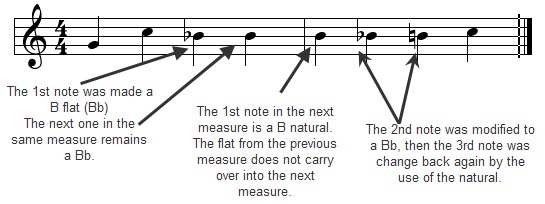
Introduction to Diezes in Music Theory
Music theory is a world where every note has its own distinct character and taste. In this article, we will discuss the diezes, which are those sharp notes that add brilliance or excitement to melodies. Whether you have been playing for years or just starting, learning how to use these accidentals can take your music to a new level. Five easy steps will show you how these sharp wonders work and why they can make any of your musical creations better if you apply them correctly Let’s sharpen our skills and explore the magic of diezes together!
Understanding the Concept of a Diez

When diving into the world of music theory, understanding the concept of a diez is essential. A diez, often symbolized by a sharp sign (♯), indicates that a note should be played one semitone higher than its natural state. This alteration raises the note’s pitch, adding depth and complexity to musical compositions.
Diezes are crucial in shaping scales and introducing tension and color to melodies. By incorporating sharp notes strategically within scales, musicians create dynamic and emotive soundscapes that captivate listeners. Mastering the art of utilizing diezes allows for greater expression and creativity in musical arrangements.
Whether playing an instrument or composing music, recognizing and interpreting diseases is key to achieving precision in your craft. Learn to recognize sharp notes in music scores and try playing them on your instrument. This will help you acquire better musical abilities. You should incorporate the Diez techniques into your repertoire. Doing so gives you many possibilities for experiments and innovations in composing music. Mastering sharp notes is an ordeal worth embracing if one wants to improve his or her musical performance to a greater degree.
The Role of Diezes in Music Scales
Diezes play a crucial role in shaping the tonality and structure of music scales. In Western music theory, a diez is represented by the sharp symbol (♯), indicating that a semitone should raise a note. This alteration creates tension and adds color to melodies, allowing for harmonic richness and complexity within scales.
When applied to music scales, diseases modify the intervals between notes, leading to sound texture and mood variations. By incorporating sharp notes into scales, musicians can create dynamic contrasts and evoke different emotions through their compositions.
The diezes in scales also influence chord progressions, melodic patterns, and overall musical direction. Understanding how these sharp notes interact within scales is essential for musicians looking to expand their harmonic palette and craft more intricate musical arrangements.
Whether exploring classical or contemporary genres, mastering diseases in music scales opens up endless possibilities for creativity and expression.
Tips for Identifying and Playing Sharp Notes

Sharp notes, indicated by a diez symbol in music notation, add a unique flavor to melodies and harmonies. To master playing sharp notes effectively, developing a keen ear for pitch variations is essential. Develop your ears by concentrating on songs with clear, sharp notes and attempting to recognize such sounds within the musical phrases.
When looking at sheet music, always notice the key signature located at the beginning of every staff.
The presence of diseases will determine which notes are played as sharps throughout the piece. Practice scales with sharp notes regularly to familiarize yourself with their sound and finger placements on your instrument or voice.
Experiment with different articulations and dynamics when playing sharp notes to highlight their distinctive quality in your performance. Remember that mastering sharp notes is not just about accuracy but also about expressing emotion through these enhanced tones in your music.
Practicing with Diezes: Exercises and Examples

Ready to sharpen your music skills with diezes? Let’s dive into some practical exercises and examples to help you master the art of sharp notes.
Begin by familiarizing yourself with the positions of diseases within different scales. Practice playing scales that incorporate sharp notes, paying close attention to how each diez alters the sound and mood of the melody.
Challenge yourself by incorporating diezes into simple melodies. Experiment with adding a sharp note here and there to see how it transforms the overall composition.
Next, try improvising using diezes. Create your own musical phrases that feature sharp notes, allowing your creativity to flow freely as you explore new sounds and harmonies.
Don’t forget about ear training exercises! Listen carefully to songs or pieces of music that prominently feature sharp notes. Try to identify these diezes by ear, enhancing your ability to recognize them in different musical contexts.
By consistently practicing with diezes through various exercises and examples, you’ll gradually build confidence in handling sharp notes fluently within your music repertoire. Keep honing your skills and enjoy the journey of mastering this essential aspect of music theory!
Integrating Diez Techniques into Your Music
Once you’ve mastered the art of sharp notes and understand how diezes enhance music scales, it’s time to integrate these techniques into your playing. Incorporating diezes effectively can add depth and emotion to your music, creating a dynamic sound that captures listeners’ attention.
Experiment with incorporating diezes in different musical genres to explore their versatility. Whether performing classical music or learning jazz improvisation, sharp notes can always heighten your music and give it a unique flavor.
Sharpening skills in terms of accuracy and fluency in playing is the main objective for practicing scales that consider precisely sharp notes. By honing your skills in recognizing and executing diez techniques, you’ll become more confident in incorporating them seamlessly into your compositions.
Remember that mastering diez techniques is a journey that requires patience and dedication. Try innovative methods of incorporating sharp notes into your music, breaking the mold while maximizing the full capabilities of these powerful musical tools.
FAQs:
Q: What are diezes in music theory?
A: Diezes, represented by the sharp symbol (♯), are notes one semitone raises, adding tension and complexity to music.
Q: Why are diezes important in musical composition?
A: Diezes introduce sharp notes that enrich melodies, offering compositions more emotional depth and complexity.
Q: How can I identify diezes in sheet music?
A: Look for the sharp symbol (♯) in the key signature or next to notes, indicating they should be played one semitone higher.
Q: What role do diezes play in chord progressions?
A: Diezes alter the notes in chords, adding tension and variation, which can enhance the progression’s emotional impact.
Conclusion
To become a better player and understand the scales, mastering the art of sharp notes, also called diseases in music theory, is vital for any musician who wants to be good at playing. Understanding these two concepts will enable one to identify and play sharp notes easily.
As you explore your musical journey, remember that perfect practice is the only way to incorporate Diez techniques into your music. Exercising and examples will enable you to improve in this area of skill and performance. Sharp notes sweeten melodies and make compositions deeper.
Thus, keep sharpening your craft, exploring and incorporating nuances of diseases into your song list. By mastering sharp notes, you will not only enrich your music but also open up new realms of creative thoughts within yourself. Have fun!

